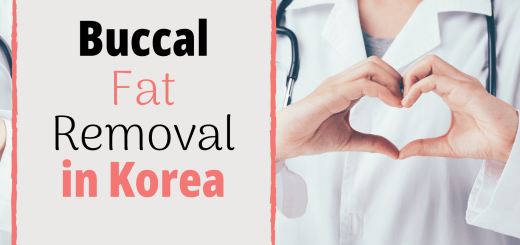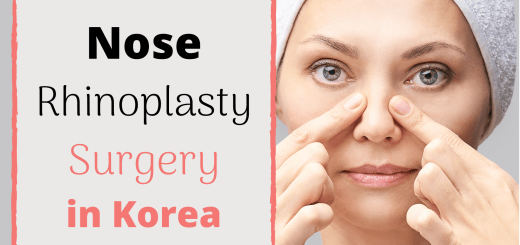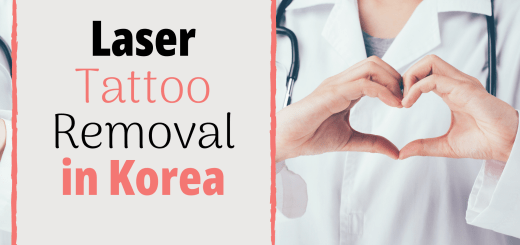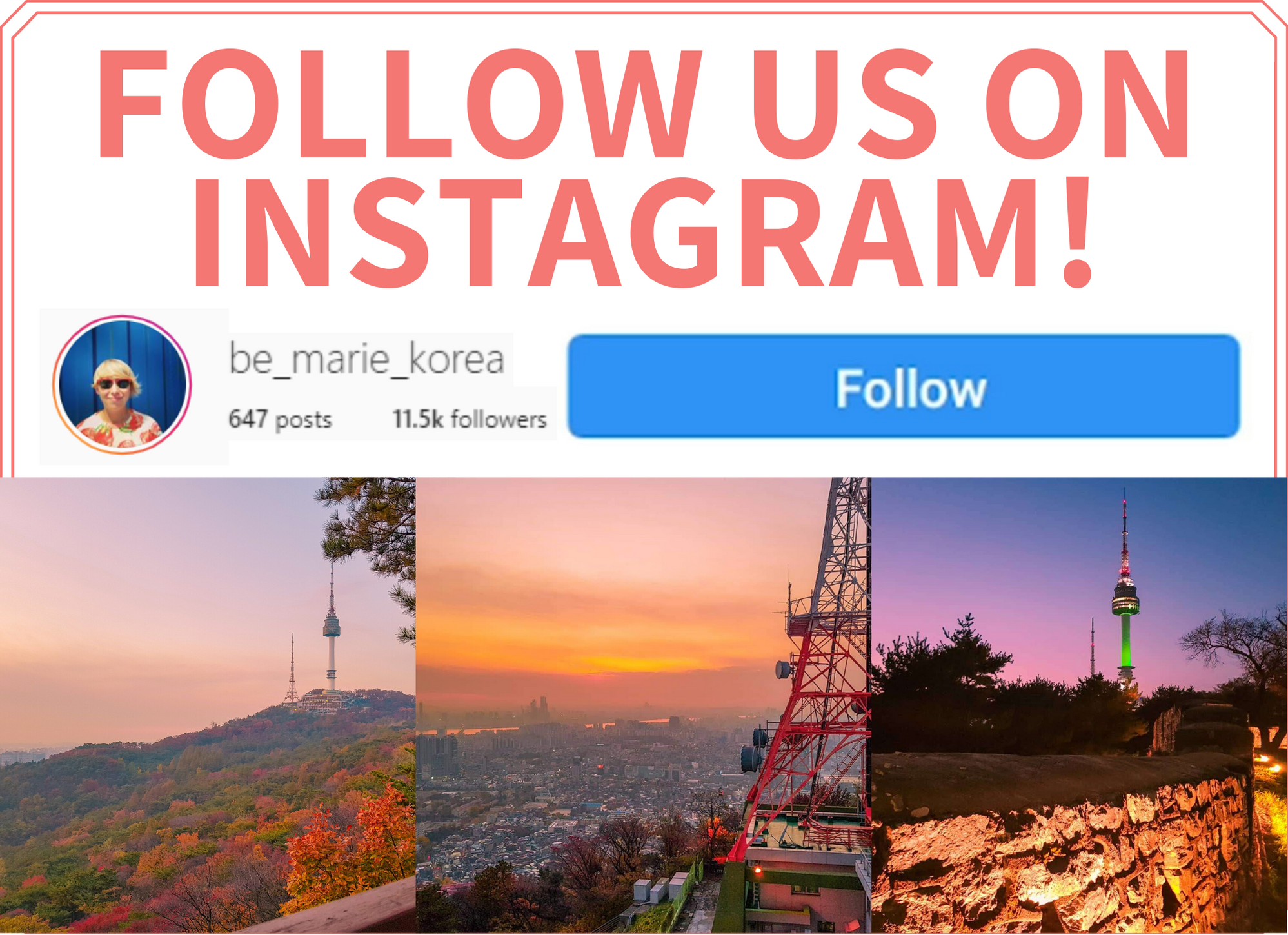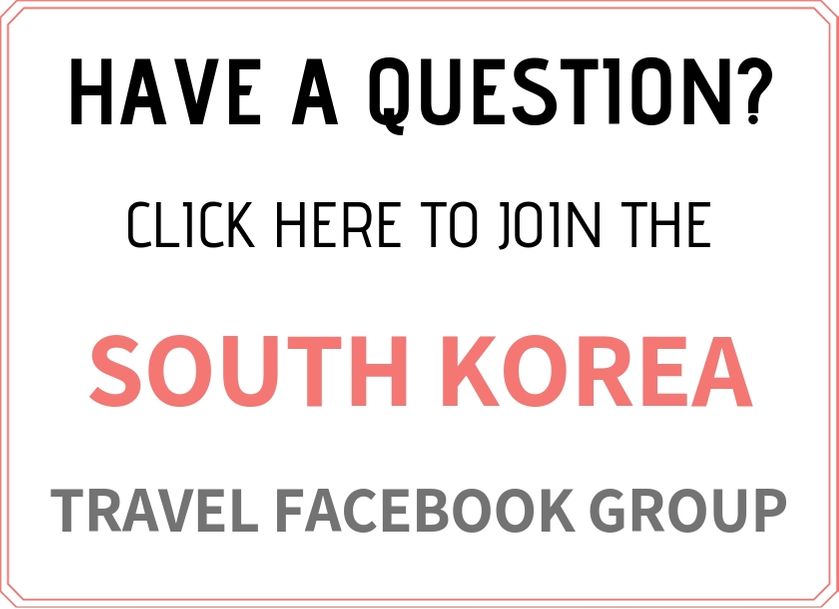Getting Smile Eye Surgery in Korea | Best Clinics, Costs, Procedure Types & More
If you’re considering vision correction surgery, SMILE (Small Incision Lenticule Extraction) eye surgery in Korea should be at the top of your list. Korea isn’t just a favorite destination for its rich culture, food, and K-pop. It’s also renowned worldwide for its advanced medical technologies, including eye surgeries. Here’s why Korea stands out for SMILE eye surgery:
Contents
Understanding the SMILE Procedure
SMILE (Small Incision Lenticule Extraction) is a cutting-edge laser eye surgery designed to correct common vision problems such as myopia (nearsightedness) and astigmatism. Developed as a minimally invasive alternative to traditional LASIK, SMILE has quickly gained popularity due to its numerous benefits and impressive results.
How SMILE Works
SMILE involves using a femtosecond laser to create a small, lens-shaped piece of tissue (referred to as a lenticule) within the cornea. This lenticule is then removed through a tiny incision, resulting in a reshaping of the cornea and correction of the refractive error.
Key steps in the SMILE procedure:
- Laser creation of lenticule: The femtosecond laser is used to precisely create the lenticule inside the cornea.
- Incision: A small, 2-3mm incision is made on the surface of the cornea.
- Lenticule removal: The lenticule is carefully extracted through the incision, which reshapes the cornea to correct the vision.
Benefits of SMILE
SMILE offers several advantages over traditional LASIK surgery, including:
- Minimally invasive: With a smaller incision than LASIK, the procedure is less invasive, resulting in quicker healing times and reduced risk of complications.
- Stability: The cornea’s structural integrity is better maintained with SMILE, providing more stable long-term results.
- Less dry eye: Because fewer nerves are disrupted during the procedure, patients experience less post-operative dryness compared to LASIK.
- Quick recovery: Many patients notice significant improvements in vision within a few days, allowing for a rapid return to normal activities.
What to Expect During Your Visit
If you plan to travel to Korea for SMILE surgery, here’s a general overview of what to expect:
- Initial consultation: Your first visit will involve a thorough eye examination to determine your suitability for SMILE.
- Pre-operative preparations: Detailed instructions will be provided to prepare you for the surgery day.
- The procedure: The SMILE surgery itself typically takes about 20-30 minutes.
- Post-operative care: Follow-up appointments are critical to ensure proper healing and to monitor your progress.
Planning Your Travel
When organizing your trip to Korea for SMILE surgery, consider the following tips:
- Research clinics: Look for clinics with good reputations and read reviews from previous patients.
- Travel documents: Ensure your passport and any necessary visas are up-to-date.
- Accommodation: Many clinics can assist you with finding comfortable lodging nearby.
- Stay duration: Plan for a stay of at least a week to allow for pre-surgery consultations and post-operative check-ups.
Choosing to undergo SMILE surgery in Korea can be a life-changing decision, offering you the chance to experience world-class care while exploring a vibrant and culturally rich country. With careful planning and the right clinic, you can look forward to improved vision and a memorable journey.
Benefits of SMILE Over Traditional LASIK
When planning a trip to Korea, especially for medical tourism, you might come across the term SMILE eye surgery. This innovative procedure offers several advantages over traditional LASIK, and Korea’s cutting-edge medical facilities make it an ideal destination for this advanced eye treatment.
How Does SMILE Compare to Traditional LASIK?
Benefits of SMILE eye surgery over traditional LASIK:
-
Minimized Invasiveness
- SMILE: Utilizes a single laser to make a small incision, eliminating the need for a flap.
- LASIK: Requires creating a corneal flap, which can be more traumatic to the eye.
-
Faster Recovery Time
- SMILE: Typically results in quicker recovery, with patients often returning to normal activities within a day.
- LASIK: May involve a longer recovery period due to the more invasive nature of the procedure.
-
Reduced Risk of Complications
- SMILE: The small incision reduces the risk of complications such as flap dislocation or dry eyes.
- LASIK: The flap creation can sometimes lead to issues such as dry eyes or flap-related complications.
-
Enhanced Stability and Durability
- SMILE: The structural integrity of the cornea is better preserved, offering more long-term stability.
- LASIK: The creation of a flap can weaken the cornea, potentially affecting long-term stability.
-
Comfort and Convenience
- SMILE: Less invasive, often results in less post-operative discomfort.
- LASIK: Some patients report more post-operative discomfort due to the flap.
Why Choose Korea for SMILE Eye Surgery?
Korea is renowned for its medical advancements and high standards of healthcare. When considering SMILE eye surgery, the country offers:
-
State-of-the-Art Facilities
- Advanced clinics and hospitals equipped with the latest technology.
-
Expert Surgeons
- Highly qualified and experienced ophthalmologists specializing in laser eye surgeries.
-
Competitive Pricing
- Affordably priced medical procedures compared to Western countries without compromising on quality.
-
Comprehensive Service
- Seamless integration of medical treatment with travel accommodations, making for a stress-free experience.
Korea’s combination of exceptional medical services and rich cultural experiences makes it a compelling destination for those considering SMILE eye surgery. Whether you are seeking to improve your vision or explore a new country, Korea offers a unique opportunity to achieve both.
Preparing for Your SMILE Surgery in Korea
South Korea has rapidly emerged as a global hub for medical tourism, especially for vision correction procedures such as SMILE (Small Incision Lenticule Extraction) eye surgery. Here’s everything you need to know to prepare for your SMILE surgery in the Land of the Morning Calm.
Why Choose Korea for SMILE Surgery?
- Advanced Technology: South Korean clinics are equipped with the latest medical technology and state-of-the-art facilities.
- Experienced Surgeons: Highly skilled and internationally trained eye surgeons perform the SMILE procedure, ensuring quality and safety.
- Affordability: The cost of SMILE surgery in Korea is often lower compared to Western countries, making it a budget-friendly option without compromising on quality.
- Comprehensive Care: Korean medical centers provide thorough pre-operative consultations and post-operative care, ensuring a smooth experience.
Steps to Prepare for Your SMILE Surgery
Consultation and Research
- Choose the Right Clinic: Take time to research different clinics and surgeons. Look for reviews, success rates, and the types of equipment they use.
- Initial Consultations: Many clinics offer online consultations for international patients. Utilize this to clarify doubts and understand the procedure.
- Medical Records: Ensure you have all necessary medical documents, including any previous eye check-up reports.
Travel Arrangements
- Visa and Documentation: Check the visa requirements for your country and ensure all paperwork is in order.
- Travel Insurance: Consider getting travel insurance that covers medical procedures.
- Accommodation: Book accommodation close to the clinic for convenience, as you may need multiple visits for follow-ups.
Before the Surgery
- Pre-operative Instructions: Follow any guidelines provided by your surgeon. This might include avoiding wearing contact lenses for a specified period.
- Stay Healthy: Maintain a healthy diet and lifestyle leading up to the surgery to ensure your body is in the best condition for recovery.
- Arrange Transportation: You’ll need someone to accompany you post-surgery as you won’t be able to drive immediately after the procedure.
The Day of Surgery
- Comfortable Attire: Wear comfortable clothing on the day of your surgery.
- Arrive Early: Plan to arrive at the clinic early to allow time for any last-minute preparations or paperwork.
- Stay Calm: Remember to stay calm and relaxed. The procedure is quick and typically lasts less than 30 minutes.
Post-Surgery Care
- Follow-up Appointments: Adhere to the follow-up schedule given by your surgeon for optimal recovery.
- Medication: Use prescribed eye drops and medications as directed to prevent infection and promote healing.
- Rest and Recovery: Give your eyes ample time to rest. Avoid strenuous activities and screen time as much as possible during the initial recovery phase.
Exploring Korea Post-Surgery
After your surgery and a brief recovery period, take the opportunity to explore South Korea. From the bustling streets of Seoul to the tranquil temples of Gyeongju, there’s a wealth of experiences waiting for you. Ensure you prioritize your eye health while enjoying the sights by wearing protective sunglasses and taking regular breaks.
Post-Surgery Care and Recovery Tips
Undergoing SMILE eye surgery in Korea can significantly improve your vision and overall quality of life. However, the success of the surgery doesn’t end when you leave the clinic. It’s essential to follow proper post-surgery care and recovery tips to ensure optimal healing and the best visual outcomes.
Immediate Post-Surgery Care
Right after your SMILE eye surgery, you’ll be given specific instructions by your surgeon. These guidelines are crucial for a smooth recovery:
- Rest Your Eyes: Avoid activities that strain your eyes, such as reading, watching TV, or using digital devices for at least 24 hours post-surgery.
- Protective Eyewear: Wear the provided protective glasses to shield your eyes from dust, bright lights, and accidental rubbing.
- Avoid Water Exposure: Refrain from getting water in your eyes. This includes swimming, using saunas, or even washing your face rigorously. Use a clean washcloth to gently clean around your eyes.
Medication and Follow-Up
Your surgeon will prescribe medications to support healing and prevent infections:
- Antibiotic Eye Drops: Use these as directed to prevent any potential infections.
- Lubricating Drops: Keep your eyes moist and comfortable, as dry eyes are a common temporary side effect.
- Pain Relievers: If discomfort arises, over-the-counter pain relief options may be recommended.
Regular follow-up appointments will be scheduled to monitor your healing progress and address any concerns.
Lifestyle Adjustments
Post-surgery, some modifications to your routine can aid the healing process:
- Avoid Heavy Lifting: Strenuous activities can increase blood pressure and pressure in your eyes, which could complicate healing.
- No Makeup: Steer clear of eye makeup for at least a week to reduce the risk of irritation or infection.
- Limit Screen Time: Digital screens can exacerbate eye dryness and discomfort during the initial recovery period. Take frequent breaks using the 20-20-20 rule—every 20 minutes, look at something 20 feet away for at least 20 seconds.
Long-Term Care
Even after your eyes have healed, maintaining good eye health is important:
- Regular Eye Exams: Continue regular eye check-ups to monitor your vision and eye health.
- Protective Measures: Wear sunglasses with UV protection to shield your eyes from harmful rays.
- Healthy Habits: Consuming a balanced diet rich in vitamins A, C, and E can support eye health. Hydrate well and avoid smoking.
By adhering to these post-surgery care and recovery tips, you can maximize the benefits of your SMILE eye surgery. Enjoy your enhanced vision, and take in the beauty of Korea with a clear and improved perspective.
Exploring Seoul: Activities and Attractions.
Seoul, the vibrant capital of South Korea, offers a mix of modern skyscrapers, historic temples, and bustling street markets. Whether you’re a culture enthusiast, a food lover, or an adventure seeker, Seoul has something for everyone. One emerging trend among visitors is combining sightseeing with personal wellness, such as SMILE eye surgery.
Top Clinics for SMILE Eye Surgery
Seoul is home to several state-of-the-art clinics specializing in SMILE eye surgery. Here are some of the top facilities:
- B&VIIT Eye Center: Known for its experienced surgeons and the latest technology.
- Dream Eye Center: Offers comprehensive consultations and personalized treatment plans.
- EyeMedi Eye Clinic: Combines modern equipment with a patient-centered approach.
How to Prepare for Your Procedure
Before undergoing SMILE eye surgery, it’s crucial to be well-prepared. Here are some tips:
- Consult Your Doctor: Have a thorough eye examination and discuss your medical history.
- Follow Pre-Op Instructions: Avoid wearing contact lenses and follow any other guidelines provided by your surgeon.
- Plan Your Stay: Book a comfortable hotel and consider extending your stay to explore Seoul while you recover.
Attractions to Enjoy Post-Surgery
While your eyes heal, why not take the opportunity to explore the many attractions that Seoul has to offer?
- Gyeongbokgung Palace: A majestic royal palace featuring beautiful gardens and traditional architecture.
- Myeongdong Shopping Street: A bustling area packed with fashion boutiques, street food stalls, and cosmetic shops.
- N Seoul Tower: An iconic landmark offering panoramic views of the city.
- Bukchon Hanok Village: A picturesque area with traditional Korean houses (hanoks) and charming alleyways.
Culinary Delights
Seoul’s food scene is another highlight you won’t want to miss. Here are some must-try dishes:
- Bibimbap: A flavorful mix of rice, vegetables, and meats, often topped with a fried egg.
- Kimchi: A staple in Korean cuisine; try it in various forms like kimchi stew (kimchi jjigae).
- Korean Barbecue: Grilled meats served with an array of side dishes, perfect for a communal meal.
Seoul’s public transportation system is efficient and tourist-friendly. Options include:
- Subway: Widely connected and easy to navigate with English signs.
- Buses: Another convenient way to travel, with routes covering almost all parts of the city.
- Taxis: Readily available, though it’s helpful to have your destination written in Korean.
Whether you’re visiting for medical tourism or simply to explore, Seoul promises an unforgettable journey.
Traveling Tips for Medical Tourists in Korea
South Korea has become a global hub for medical tourism, attracting visitors worldwide seeking high-quality, advanced medical procedures at competitive prices. Among the various medical services offered, SMILE eye surgery is particularly popular. If you are planning to travel to Korea for medical tourism, especially for SMILE eye surgery, here are some valuable tips.
Doing Your Research
Before you embark on your medical journey, it’s essential to:
- Choose a Reputable Clinic: Select a clinic with certified ophthalmologists and a history of successful surgeries. Look for reviews and testimonials from previous patients.
- Understand the Procedure: SMILE, or Small Incision Lenticule Extraction, is a minimally invasive laser vision correction technique. Understanding the steps, recovery time, and potential risks is crucial.
- Language Considerations: While many medical professionals in Korea speak English, there might be some language barriers. It’s beneficial to choose a clinic offering translation services or to bring a translator with you.
Planning Your Trip
Preparation and organization will ensure a smooth experience:
- Visa Requirements: Depending on your nationality, you might need a visa for medical tourism. Check the requirements well in advance.
- Travel Insurance: Invest in comprehensive travel insurance that covers medical procedures and any unforeseen complications.
- Accommodation: Opt for accommodation close to the clinic to minimize travel stress pre- and post-surgery. Many clinics offer package deals that include hotel stays.
- Local Transportation: Familiarize yourself with local transportation options, such as subways, buses, and taxis.
During Your Stay
Maximize your comfort and safety:
- Pre-Surgery Checklist:
- Avoid wearing contact lenses a few days before the surgery if instructed by your doctor.
- Get a comprehensive eye examination and follow all pre-operative guidelines.
- Post-Surgery Care:
- Adhere strictly to the aftercare instructions provided by your surgeon.
- Attend all follow-up appointments to monitor healing and progress.
- Arrange for someone to assist you during the first 24 hours post-surgery.
Beyond the Surgery
While Korea is known for its excellent medical services, it also offers much to explore:
- Sightseeing: After your recovery, visit iconic landmarks such as Gyeongbokgung Palace, Bukchon Hanok Village, and Namsan Seoul Tower.
- Culinary Delights: Try local dishes like bibimbap, kimchi, and bulgogi. Many restaurants offer English menus.
- Shopping: Explore shopping districts like Myeongdong, Dongdaemun, and Insadong for unique souvenirs and fashion.
Frequently Asked Questions
What is SMILE eye surgery?
Small Incision Lenticule Extraction (SMILE) is a minimally invasive laser eye surgery that corrects vision by reshaping the cornea. The procedure involves creating a small incision, making it less invasive compared to traditional LASIK surgery.
Why is South Korea popular for SMILE eye surgery?
South Korea boasts advanced medical technology, skilled surgeons, and competitive pricing for SMILE eye surgery. Many clinics also offer comprehensive care packages that include pre- and post-surgery consultations, making it an attractive destination for medical tourists.
Is SMILE eye surgery suitable for everyone?
SMILE eye surgery is suitable for most people with myopia (nearsightedness) and astigmatism. However, a thorough consultation with a qualified ophthalmologist is essential to determine individual suitability based on eye health and medical history.

